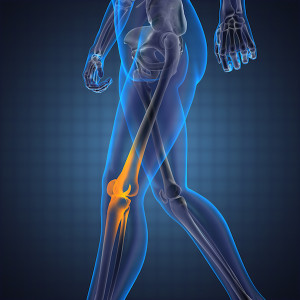
The diagnosis and surgical treatment of various conditions that impact the musculoskeletal system of the body constitute the main elements of orthopedic surgery.
The musculoskeletal system is comprised of the nerves, ligaments, joints, tendons, muscles, and the corresponding anatomical parts.
The term “orthopedic” is derived from the Greek term “ortho” which means straight. Orthopedic means setting the bones straight. Orthopedic Institute of the West, led by board certified orthopedic surgeon Dr. Brandon Gough, provides hip and knee surgery to patients in Phoenix, Scottsdale, Arizona, and surrounding locations.
ORTHOPEDIC SURGERY TREATMENT AREAS
The musculoskeletal system forms a crucial part of the human body, and it includes the following:
- Joints
- Tendons
- Bones
- Muscles
- Cartilage
- Connective tissues
An orthopedic surgeon has specialized training in the treatment of various medical concerns pertaining to these body parts. Orthopedic surgeons undertake treatments ranging from joint replacement surgery to arthritis therapy.
In general, an orthopedic surgeon will perform surgery in their specific areas of expertise. However, every orthopedic surgical procedure seeks to offer the patient relief from pain while enhancing their mobility and quality of life.
Orthopedic surgeons are qualified to address almost every condition related to the musculoskeletal system ranging from spinal tumors to broken bones. Certain conditions that orthopedic surgeons can treat are as follows:
- Knee injuries
- Hip injuries
- Shoulder injuries
- Foot Injuries
- Arthritis
- Spinal trauma
- Arm injuries
- Elbow injuries
- Scleroderma
- Hemophilia
- Hand injuries
- Bone cancer
HIP INJURIES
The hip comprises of only two bones and is known as a ball and socket joint. The base of the pelvis (acetabulum) goes around the curved edge of the femoral head or femur enabling a significant range of motion.
A fall can cause a hip fracture or the femur to crack due to the blunt force it exerts on this area. Older people with weakened bones or individuals with osteoporosis or suffering from cancer are most susceptible to hip fractures caused by an injury.
A majority of hip fractures require surgery as they can worsen if left untreated. However, physical therapy and noninvasive treatment can be effective on milder fractures. Hip fracture repair surgery involves cartilage repair and changes made to the bones using a biocompatible metal, if necessary.
KNEE INJURIES
The knee is categorized as a compound joint and comprises three bones, namely, the patella (kneecap), the tibia (which passes through the shin), and the femur (thighbone). The knee is also known as a modified hinge joint.
All three of these bones are susceptible to fractures. Patellar fractures occur due to targeted and intense trauma to the area, such as a motor crash. Jumping injuries can fracture the tibia. To break the tough and hefty femur, a strong force is necessary. People who have weakened bones are susceptible to fractures of the femur.
SHOULDER INJURIES
The shoulder comprises the clavicle and scapula. The clavicle is also called the collarbone while the scapula is known as the shoulder blade. The clavicle has a higher likelihood to break especially because of a trauma or a blow.
Most shoulder fractures can be treated with physical therapy and rest. Sprains and strains that restrict movement are treated with anti-inflammatory drugs, a sling, and sufficient rest.
For more information about hip and knee procedures and treatments by Arizona Board certified orthopedic surgeon, Brandon Gough, M.D., please click here or call us at 602-359-3088. Taking new patients in and around Phoenix, Scottsdale, Glendale, Tempe, Mesa and surrounding Arizona cities.


